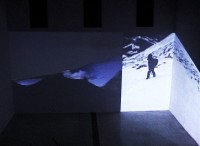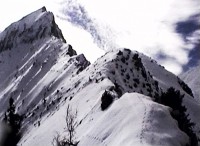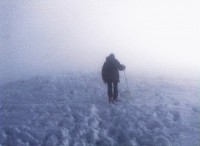- Installations
- Counter Fugue
- Passing Lines
- Two Thirds Are In Our Dreams
- The Crack
- Deck Log
- Mountains, a Timeline of
- Walk the Cloud
- The Clearing
- Imaginary Time
- Counter Memory Project, Mountains as Resistance
- Moving Line
- Gorge
- Home
- Perception of Reality
- Fluctuation
- In Memory of Water
- Rewilding Memory
- Aperture
- Singularity
- Perception
- Even Water
- Persistence Obscura
- Exile
- Silberstreif: walking in restricted times
- Tracing
- Inner Distance
- Nangpa La Pass
- War Crimes Are Being Investigated
- Episode
- C'est l'histoire d'une démocratie qui tombe
- Friendly Fire
- Resonance Fields II
- A Place Before Time
- Beyond Walden @ S.O.M.A
- Walled
- Moving Mountain
- Line of Sight
- Perception Shift
- Log II
- Mirror Fugues
- Mountains Come First
- Moving Mountain II
- Radical Distortion
- Beyond Walden
- Ravine II
- Ravine III
- Free Fall
- Rock/Mountain Gardens
©Copyright 2013-2025
RIKA KRITHARA, Deck Log
Exhibition | Interfaces, Ecological Dynamics and Human Nature, The risk of the mass extiction of life on planet, multidisciplinary conference, Delphi, Greece
Humanism without delusions
text by Nikos G. Xydakis
Art today seeks not so much beauty or grace but truth. Films, songs, installations and videos are all more concerned with politics, history, national identity, inter-racial understanding- a universal perception of problems. Yet political art today does not particularly intend to change the world, as the avant-garde art of the beginning of the 20th century did, but rather to penetrate and comprehend the conditio humana. Polemic modernism has had its day, along with the utopias dreamed in revolutions and the 20th century tragedies of humanity. Political art today is art after the Fall: the collapse of walls and borders, the collapse of certainties, the collapse of safe delineations. The utopias of the Russian avant-garde artists, of the surrealists, of the Bauhaus, have been succeeded by the dystopias of pop culture: dark and ironic, kitsch and over-mannered, cynical yet in search of hope. This new sensitivity is to be found in noir Batman and in Tin Burton's parody Mars Attack, in the genetic nightmare of Andrew Niccol's Gattaca, in the political prophesy of a society in fear in Terry Gilliam's Twelve Monkeys, in the splintering realities of David Cronenberg's Existenz, in the neoplatonic fairytale of Matrix- to take examples from commercial films of massive distribution.
Outside the mainstream, steady heroes of cinephils and the favourits at the Cannes Film Festival (proved to be) eccentric auteurs such as the Iranian minimalist Atom Egoyan, the American lyricist Jim Jarmousch, as well as the Chinese and other Asian directors.. These are auteurs who look at the world from inside out, focusing their attention on human torments, on the inner language of the emotions, on the basic right to life and dignity, on a meditation about life, history and identity.
In music, the stars of recent years are popular singers from all over the world: Creoles and people of mixed race from Africa, South America and Asia, from “forgotten” places, who sing in every language: the super-star of the global “salad” Manu Chao, the black Portuguese-speaking Cesaria Evora from the African Cape Verde, the electronic activists of Asian Dub Foundation.. The creolisation of the global stage. By their side are the heroes of the young public: Djs, the electric masters of the musical meta-text, the cooks who create the mix of the entertainment and the post-modern appropriation of the whole pop library.
The creolisation of art and the universality of artistic languages had conquered the peoples of the world long before globalization acquired a place in the headlines of the Economist and the Financial Times. Music, cinema and the visual arts provide a common denominator of the universal scale, expressing hopes and agonies, supporting new codes.
In short, they support new identities and new collective subjects at a time when the old communities appear under threat, to be suffering from erosion to collapsing.
Art after the Fall
What is the geopolitical environment in the West in the 20th century that feeds this art and shapes the young audiences' mentality? From 1989 to date, the cognitive and psychic benchmarks have been collapses, one after the other, as well as unprecedented clashes: Collapse of walls and borders within Europe, waves of immigration, fluidity, reinterpratation
of international law, politically correct wars (Kossovo, the bombing of Yugoslavia), the appearance of a new kind of terrorism on 11/9, Afghanistan, the demonization of Islam, the globalization of fear, a new final solution for the Palestinians.
Together with the spreading of fear and the rhetoric of insecurity, we have a radical questioning of the rapacious free market, a sense that social democracies are suffering from exhaustion, a rise in nationalism and racism throughout Europe. Art, in its more radiant manifestations, examines these problems directly and in a daring manner. It does not risk easy answers, yet it makes its audience face up to fundamental responsibility: to be aware of the problem, to recognize their situation. The two most recent Biennale at Venice, the retrospective exhibition of 20th century American art at the Whitney Museum, today's Documenta 11 in Kassel, all spread their gaze over the whole of humanity, delving beneath the surface, questioning, undermining commonplace attitudes. Works of art are not inert objects to be admired or consumed, but open questions, often vary painful yet at the same time a relief, like mystic rituals. It was not at all mere chance that in 1997, when Yugoslavia was wallowing in blood, the great prize at the Venice Biennale went to the Yugoslavian Marina Abramovich for her bitter elegy, a ceremony of mourning for her country, without either ulterior motives or conclusions. At the next Biennale, the Iranian Shirin Neshat (a “pupil” of Abbas Kiarostami) in turn won both the public and the prize with another elegy: this time for the forbidden song of women and the fresh poetry of the Sufi Jellalu'ddin Rumi. Both artists, like the sadly lost Chinese artist Chen Zen, start from the personal and the local and move to the universal, plunge into tradition then soar into the future. And they make art from a demand of our times: for a reborn humanism without delusions.
To go even further: in Kassel, the other day, the pain of New Yorkers following 11/9 was documented photographically, in sombre black and white, by a Moroccan Muslim, Touhami Ennarde. Trauma is memory, it is the common endowment of mankind: this is what art tells us, with painful conviction.
From outside in
Until recently, what art was concerned with was movement towards, without looking back: people who wish to abandon their homes, to give themselves up to wandering, to a nomadic life, to leave their families and lose themselves in the city, in the world. This trend began with the wanderer/flâneur of the modernist Baudelaire, who explored the soul of the City in Paris in the era of the Industrial Revolution, and reaches its peak with the kaleidoscopic Dos Passo's Manhtattan Transfer, with the Walter Benjamin's visions of urban phantasmagoria, with the wanderings of the beatniks and hippies in the boundless urban space, with the search for a new kind of nomadism in the New Age years (from Bruce Chatwin, the celebrator of travel, to the wandering parties of the rave generation). Nomadism and wandering, as a central expression of romanticism, had their own faithful followers among the intelligentsia, artists and drop-outs long before we ever heard of nomadic financiers and young internet adventurers.
After symbolic catastrophes of the 11/9 type, the movement is in the other direction: from the wide, threatening world, from the chaotic city, to the sheltered nucleus of the family, to the known and familiar. The wide world is too complex and violent; everyone wants to return home. There have been many and violent transformations in an extremely short time; an unbearable acceleration; pressure to adapt; unfailingly new and unknown environments.
The sheer worship of the New which marked the end of the 20th century has turned into a falling back, a retreat to security and the known, albeit disintegrating, values. Many of the works of art of our era already show this tendency to falling back, to hermeticism: last summer the main players at the Venice Biennale were labyrinthine works, claustrophobic little rooms and obsessively controlled spaces. And this was before anyone so much as suspected 11/9 and all that was to folloow.
The Peak of the Person
Rika Krithara's work appears to follow this curve. However, instead of closing in, of establishing a stifling control, it opens out. The is there, but the battle is being fought in the open air.
Morphologically and thematically, sensually and semantically, Krithara's work is born in this environment of transformation and expresses the complex reactions of the younger generation to an irrationally complicated and vain world. Her work is technologically up to the minute and rich; at the same time, time, as regards its conception and expression, it is protean. Man, in Krithara's work, walks in nature, makes his way, perhaps climbs towards a peak; maybe he is alone, certainly he is thinking and experiencing his relation he is thinking and experiencing his relation with nature alone, with his body, with his limits.
The work is an existential loop. The reference to mountaineering, to contact with the most primitive and inaccessible side of nature, makes the work corporeal, its rythm is the rythm of respiration. However, I perceive e deeper reference to the films of contemporary metaphysicians, especially to the great Pole Krzysztof Kieslowski (The Decalogue), and even to his forerunner Krzysztof Zanoussi (Illumination, Spiral).
Moreover, the corporeal nature of the image, the identification of existence with respiration, existence with movement, movement with feeling, inevitably recalls Andrei Tarkovski's tragic and nostalgic hero (Nostalgia) who comes and goes through the water, under a vow and with a candle in his hand, in order to find once more his faith, his place and his time, a native country for his soul.
Among the displaced stands the suffering figure of man searching for a place: a place in which to exist, a place in which to be with others and with himself, and a way to fit into his fleshy tunic. This painful course, actually an ascent to Golgotha, an ascent to Love, is the relief-giving answer that Rika Krithara's work holds, in response to the generalized fear of the New and the Other; it is an answer to the perdition of the person within the herd.
The difficult course towards the peak of the self is the alternative to the “personless” lonely fall- without the Other.
Nikos G. Xydakis is a Greek journalist, art critic, and left-wing politician. From 27 January to 28 August 2015, he served as the Alternate Minister for Culture in the cabinet of Alexis Tsipras. From 23 September 2015 to 5 November 2016, he served as the Alternate Foreign Minister for European Affairs. .
1. Spinoza, Ethica, p. 4. De affectuum viribus, Conditio humana.
2. John Zizioulas, Being as Communion, Studies in Personhood and the Church, St. Vladimir's Seminary Press, Crestwood, N.Y. 1993


